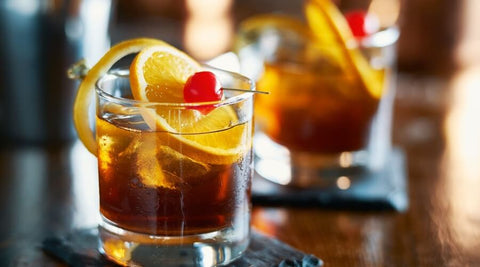Despite its immense popularity, Bourbon remains a mystery to many. For one, the Bourbon industry is highly regulated, and strict guidelines determine what can or can't be labeled as Bourbon. Here are eight interesting regulations and facts on Bourbon that you probably didn't know.
- Though it can be produced anywhere in America, 95 percent of the world's Bourbon supply comes from Kentucky's 68 distilleries. All the same, all Bourbon has to be made within the United States.
- Bourbon whiskey has to be made with a minimum of 51% corn with other grains such as rye, wheat, and barley, making up the remaining percentage.
- Bourbon must be distilled at no higher than 160 proof, aged at no more than 125 proof, and bottled at 80 proof or more.
- Bourbon must be aged in new American oak barrels that must be discarded after the aging process is complete. Most bourbon distilleries sell their used barrels to other alcohol producers, mainly Scotch distillers.
- Though Bourbon has no minimum specified duration for its aging period (can range from a few months to years), very few distillers take advantage of this. Any bourbon aged for less than four years must be labeled to reflect this and often has a lower market value. Un-aged Bourbon is referred to as white dog, and some distillers do sell it.
- Coloring or flavoring can't be added to Bourbon. The natural sugars in the charred wood in the oak barrels give the Bourbon its color and much of its flavor.
- Have you ever wondered why Elijah Craig 18-year Old Single Barrel is so expensive? There are seven — yes, seven — different taxes levied on Bourbon. These taxes account for more than half of the cost of every bottle and often drive the price up.
- Not that you need reminding, but it's illegal to distill your own Bourbon.

The Origin of Bourbon
The origin of Bourbon can be traced to the ingenuity of European migrants in the 1800 century. Who brought with them the knowledge of distilling and aging whiskey.
Essentially, any type of grain can be used to make whiskey, so corn, which was abundant in the American South, was bound to find its way in these settlers' distilleries. Today Bourbon has to be made with at least 51% corn.
It's been said that Elijah Craig, an 18th-century Baptist minister, invented Bourbon by aging the already famous moonshine in charred oak casks. This process gives Bourbon its reddish color and distinctive taste. However, many people dispute.

The general consensus is that Bourbon was not invented by any specific person but instead evolved through the hands of many distillers.
Throughout the 19th century, Bourbon’s popularity grew. It was cheaper than imported liquors due to the abundance of corn that made it relatively easy to make. Bourbon distillers also got into print advertising, with the first ad for Bourbon being printed in the Western Citizen Newspaper in Paris, Kentucky, in 1821.
However, Prohibition devastated the bourbon industry. Most distilleries were forced to stop operating never to open again. Though the government offered ten licenses to produce whiskey for medicinal purposes, very few companies used the licenses.
During World War II, many distilleries were converted to produce penicillin, and whiskey production plummeted again.

After Prohibition and World War II, the Bourbon industry struggled to get back on its feet for decades. Even after 1964, when the United States Congress declared Bourbon an "America's Native Spirit" and the country's official distilled spirit, production didn't pick up until the 90s.
The Resurgence of Bourbon
Over the past three decades, sales of Bourbon have skyrocketed. From the mid-1980s, Americans 'rediscovered' whiskey, and the wave of fascination with single malt Scotch whiskey, helped boost Bourbon's profile among whiskey enthusiasts.
After seeing the enthusiasm for premium Scotch, Bourbon distillers created a "super-premium" category of their brands, which included single barrel, small-batch, and extra-aged Bourbons. These were marketed to young consumers who were willing to shell out more money for costlier goods like premium whiskey.
Also, a big part of Bourbon's popularity can be attributed to the rise in the cocktail culture. Classic whiskey cocktails like Old Fashioned and Mint Julep that often incorporate Bourbon have made this whiskey a legend among bartenders.

Since 2014, there are more Bourbon barrels than the whole population of Kentucky. There are now almost two barrels for every person living in Kentucky. The production and sale of Bourbon is now a multibillion-dollar business with its spot firmly secured in the American whiskey industry.
You Might Also Enjoy Reading: 10 of The Most Underrated Whiskies in The World
Every September is marked as the National Bourbon Heritage Month, commemorating the craftsmen in the history of bourbon whiskey. September might have passed, but that doesn't mean you can’t enjoy this iconic whiskey.
The next time you get a bottle of your favorite Bourbon, as you take that first sip, make sure to take a moment and acknowledge all the craftsmanship and history behind its making.

casLIygS
ArzgpHtJUnDKTQX
NHELFXfxcdy
HUdTNuYVmvtp
byFjNRzGCYdIk
Leave a comment